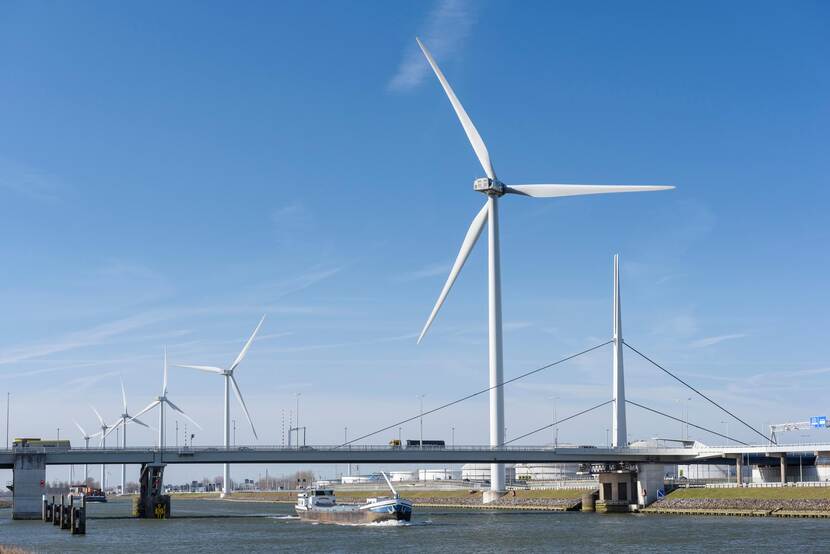Analysing energy efficiency, costs and land use for carbon neutral driving, sailing and flying
A wind farm the size of the province of Utrecht would be needed to provide carbon neutral electricity for all current road vehicles in the Netherlands if these were to be battery-electric vehicles. Energy carriers such as hydrogen, synfuels and biofuels require much more space, but have specific advantages that are particularly important for long-distance shipping and aviation. This emerges from research conducted by the Netherlands Institute for Transport Policy Analysis (KiM) and TNO (Netherlands Organisation for Applied Scientific Research) into carbon neutral mobility.

In their study 'Energy chains for carbon neutral mobility', KiM and TNO describe what carbon neutral mobility requires in terms of energy, costs and land area (including sea surface). In doing so, they examined four forms of energy for cars, trucks, ships and aircraft: electricity, hydrogen, synfuels and biofuels. A condition was that not only does the vehicle drive without CO2- emissions, but also that the energy is produced by carbon neutral sources, such as solar panels or wind turbines. For road traffic, electric driving is a good way of making mobility carbon neutral, because of its relatively low costs and use of land.
Hydrogen, synfuels and biofuels
Alternatives to electric transport include transportation using hydrogen, synthetic fuels (synfuels) and biofuels. Electricity is needed to produce hydrogen and synfuels. Because of energy losses in production, and for hydrogen also in transport and distribution, the need for electricity is two to five times higher than for battery electric vehicles. As a result, the costs and land required for generating energy - in wind farms, for example - are also much higher. In order to produce enough synfuels for the planes and ships currently bunkering fuel in the Netherlands, a wind farm with an area nine times the size of the province of Utrecht would be required. This is equivalent to a quarter of the Dutch section of the North Sea.
The advantages of hydrogen, synfuels and biofuels are that they can be stored and transported more easily than electricity, for example by pipeline or ship. This means there is more flexibility as to the location of production of the energy carriers. It can be abroad, although that does mean higher transport costs. Biofuels are an alternative. They require little land if they are produced from waste streams or agricultural residues. Biofuel production from energy crops takes a large land area.
Higher costs
Synfuels and biofuels can be chemically identical to today's petroleum-based fuels: petrol, diesel and kerosene. The advantage then is that the current infrastructure can be used for distribution to customers and that vehicles do not have to be modified. Despite this, the lifecycle costs of synfuels, including vehicle purchase costs, are (much) higher than those of electric transport. This is mainly due to the high costs of hydrogen and CO2 (which must be captured from the air), and the production process. Another factor that raises costs compared to electric vehicles is that when synfuels are burned in the engine, more than half of the energy is not used for propulsion but is lost as heat.
Contribution to discussion
For carbon neutral mobility, carbon neutral energy carriers are crucial. But where do we get those from? Is the North Sea big enough to produce energy for carbon neutral mobility? What criteria are important when making choices for energy carriers for vehicles, ships and aircraft? Should we start importing energy for mobility? With this research, KiM aims to contribute to compiling relevant facts to help policymakers make choices for carbon neutral mobility.